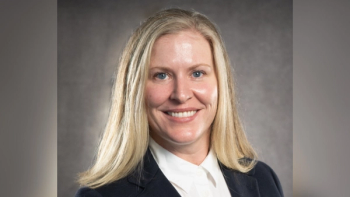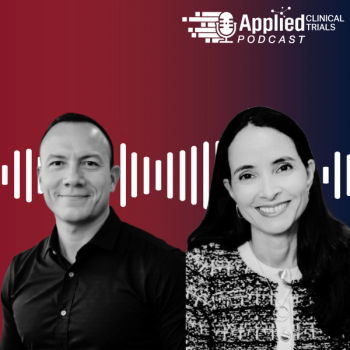
- Applied Clinical Trials-12-01-2021
- Volume 30
- Issue 12
Tracking Change in the Global Investigative Site Landscape
New benchmarks uncover a maturing and globally-shifting market.
During the COVID-19 pandemic, some have observed that principal investigators with minimal experience, limited infrastructure, and low study grant income have divested from clinical trial activity. Delays, and in some cases cancelled clinical trials, during the early stages of the pandemic made it difficult for these investigators to cover their operating costs and remain viable. Anecdotal evidence supports this observation but there is no hard evidence to confirm it and characterize the magnitude of these departures.
A recent analysis by the Tufts Center for the Study of Drug Development (Tufts CSDD) provides updates on the global landscape of FDA-regulated investigative sites that will serve as a useful baseline for comparisons. The results of this analysis show that this global landscape remains very fragmented with a disproportionately high concentration of low-volume principal investigators. But the data also suggests that—even without the effects of the pandemic—the landscape is scaling and maturing with a growing proportion of higher-volume principal investigators now operating in North America compared to 10 years ago.
BMIS vs CT.GOV
Consistent with past studies, Tufts CSDD analyzed data from the Bioresearch Monitoring Information System (BMIS) maintained by FDA’s Center for Drug Evaluation and Research (CDER). The Tufts CSDD team extracted data on investigators filing form 1572 between 2010 and 2020. A unique identifier based on last name, first name, and country was used–instead of the Reviewer ID—to avoid counting duplicate records inadvertently created by slight variations in variables due to typos and alternate spellings.
For this analysis, investigator productivity is defined as the volume of clinical trials associated with each unique identifier. Turnover rates are defined as the percentage of unique identifiers who filed at least one 1572 form in a given year but had not filed another 1572 form within the subsequent four years. Past research conducted by Tufts CSDD has demonstrated that if an investigator does not file a new 1572 form within four years, it is highly likely that they will never file again.
To assess investigative site landscape changes, Tufts CSDD considered using ClinicalTrials.gov, as it is becoming a more valuable and reliable source for data. However, for our purposes, use of ClinicalTrials.gov is problematic. It lacks data on individual clinical investigators, instead providing a less granular view at the facility level that cannot determine investigator-level changes. It cannot detect, for example, if a site network loses a clinical investigator but remains listed as active due to involvement by other investigators at that facility. Dedicated sites and site networks may engage individual investigators located in distinct geographic locations, yet the ClinicalTrials.gov filing may only list the facility’s central address.
Slowing growth, especially among low-volume investigators
There were 32,077 active principal investigators operating worldwide in 2020. This number continues to grow but at a slower overall rate of 1.5% annually during the most recent 10-year period compared to 4.6% annually in the prior decade.
The least productive principal investigators—those filing only one 1572 in 2020—make up the highest proportion (66%) of the global site landscape. Approximately one in four (23%) investigators filed two to three form 1572s in 2020 and 11% filed more than four form 1572s last year. But growth in the least productive principal investigator segment has remained flat during the past decade and the segment share of the total has been declining steadily. This compares to 3.2% annual growth for this segment during the previous 10-year period.
The most active principal investigator segments have been growing at a much faster rate: the segment comprised of those who filed between four and six form 1572s each year has grown 5.2% annually since 2010; those who filed seven or more form 1572s have grown 8.6% annually during that same period.
Returning to North America
The distribution of FDA-regulated principal investigators remains highly global but the movement away from North America observed 10 years ago has now reversed direction. In 2020, 63% of all principal investigators were based in the US and Canada; 19% in Europe; and 18% in the rest of the world. This compares to 57% in North America; 20% in Europe; and 23% in the rest of the world a decade ago.
The rest-of-world segment—which includes the highly populous areas of China and India—has lost the largest share of total FDA-regulated principal investigators. The shift is due in part to drug development sponsors having difficulties dealing with legal, regulatory, and health authorities and limited oversight and investigative site infrastructure there. The growing proportion of investigators based in North America, and the sustained proportion in Europe, confirms sponsor and CRO preference for placing clinical trials in more mature and established regions during the past decade.
The principal investigator segment in North America is scaling as site selection practices dictate engaging study conduct providers with more experience, infrastructure, and patient diversity. In 2010, the proportion of low-volume, single-form 1572 filers was 63%. In 2020, the proportion had declined to 55%. During this period, the higher-volume, more experienced principal investigator segment grew from 11% to 17%. In Europe, the reverse has occurred: whereas in 2010, 84% of principal investigators were low volume filers, in 2020 that proportion grew to 91%. In the rest of the world, the proportion of low-volume, single-form 1572 filers declined modestly from 82% in 2010 to 78% in 2020.
Turnover high but improving
Turnover rates among FDA-regulated principal investigators remain high but they have been improving during the last 10 years. In 2010, 40% of all individual investigators who had filed form 1572s four years earlier failed to file again. In 2020, that proportion had declined to 35%. Turnover rates have improved during the past decade in North America, but they have worsened in Europe and the rest of the world. Whereas in 2010, 48% and 46%, respectively, of all individual investigators in Europe and the rest of the world who had filed form 1572s four years earlier failed to file again, in 2020, the proportions increased to 56% and 50%, respectively.
And similar to that observed 10 years ago, turnover rates among the least-active principal investigators—those filing a single 1572 form each year—are the highest, with approximately half choosing not to file again.
As we continue to move into a post-pandemic operating environment, new benchmarks and measures will inform trends in the global investigative site landscape. Once data from 2021 and later years is published by the FDA, the fate of novice principal investigators can be quantitatively assessed. In addition, we look forward to documenting the ongoing impact of virtual and remote support on traditional clinical trial execution models.
Reach Ken Getz via email at
Articles in this issue
almost 4 years ago
Clarifying Ownership of Clinical Trial IRT Data: Site vs. Sponsoralmost 4 years ago
Reviewing FDA’s Latest Guidance on RWDalmost 4 years ago
Analysis: FDA’s COVID-19 Accelerated Pathwaysalmost 4 years ago
Building Relationshipsalmost 4 years ago
EMA: A Change in Character as Well as Powers?almost 4 years ago
Pandemic Alters Policies for Drug Developmentalmost 4 years ago
2022 Trends, More of the Same but Morealmost 4 years ago
Applied Clinical Trials December 2021 Issue (PDF)about 4 years ago
Assessing Sponsor and CRO Awarenessabout 4 years ago
Decentralized vs Digital Clinical Trials: There is a DifferenceNewsletter
Stay current in clinical research with Applied Clinical Trials, providing expert insights, regulatory updates, and practical strategies for successful clinical trial design and execution.






.png)



.png)



.png)
.png)
